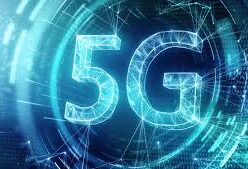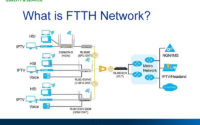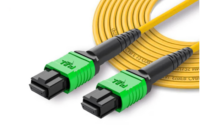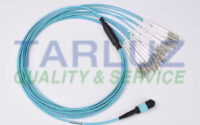The Future of Communication: How Optical Technology is Shaping the Next Generation of Connectivity
In today’s digital world, the demand for faster, more reliable communication networks is growing rapidly. Technologies like cloud computing, 5G, the Internet of Things (IoT), and smart cities are driving this surge in data traffic. Traditional copper-based systems can no longer keep up with the explosion in data consumption. This creates a critical need for more efficient solutions. Optical communication technology offers the high-speed answer that is transforming how we transmit information worldwide.

What is Optical Communication?
Optical communication transmits data using light waves, typically through optical fibers. Unlike electrical signals sent via copper cables, optical signals use light pulses to carry large volumes of data at incredible speeds. This technology is considered the future of communication, offering numerous advantages over traditional methods.
Why Optical Communication is the Future
Ultra-High-Speed Transmission
Optical communication enables data transfer at speeds of up to 100 gigabits per second, far exceeding the capabilities of copper wires. This speed makes optical communication the ideal choice for today’s high-demand networks.
Low Latency and Long-Distance Reach
Optical signals can travel thousands of kilometers with minimal signal loss, thanks to fiber optics’ low attenuation rates. This makes them perfect for global communication, eliminating the need for frequent signal boosters or repeaters.
Massive Bandwidth Capacity
Optical fibers carry exponentially more data than copper cables. As the world becomes increasingly connected, optical communication becomes the backbone of modern networks, meeting the growing demand for higher bandwidth and faster speeds.
Immunity to Electromagnetic Interference
Unlike electrical signals, optical signals are immune to electromagnetic interference. This enhances the reliability of optical communication, particularly in environments with high electromagnetic activity, such as factories or hospitals.
Enhanced Security
Optical communication systems provide greater security than traditional electrical methods. It’s much harder to tap into fiber-optic networks, making them a more secure choice for sensitive data.
Cutting-Edge Applications of Optical Communication
Optical communication technology is revolutionizing multiple industries, including telecommunications, healthcare, entertainment, and more. Here are a few key applications:
5G Networks
Fiber-optic cables are essential for building high-speed, low-latency 5G networks. They support the immense data transfer needs of 5G, enabling faster speeds and better connectivity.
Data Centers
Data centers rely on fiber-optic networks to handle large-scale data storage and processing demands. The growth of cloud computing and big data has made these networks crucial to efficiency.
Undersea Cables
Undersea fiber-optic cables connect continents, forming the backbone of global communication. They ensure high-speed data transfer across oceans, supporting the worldwide flow of information.
Smart Cities
Optical communication is the backbone of smart city infrastructure. It allows real-time communication between sensors, devices, and systems, helping cities become more efficient in managing traffic, utilities, and services.
How TARLUZ is Leading the Way in Optical Communication Components
At TARLUZ, we lead the optical communication revolution. As the demand for faster, more reliable networks grows, we provide cutting-edge optical components that power the future of communication. Our products—such as high-performance fiber-optic connectors and advanced optical modules—are designed to meet the evolving needs of telecom networks and data infrastructure.
For instance, our fiber-optic connectors are crafted for precision and durability, ensuring minimal signal loss and maximum reliability. Our optical modules offer ultra-fast data transmission speeds, perfect for high-bandwidth applications like 5G base stations, cloud computing, and data center interconnects.
| Fiber-Optic Connectors | Optical Modules |
|---|---|
| SFP | |
| 800G QSFP 400G QSFP 200G QSFP |
|
| CFP | |
| 800G OSFP 400G OSFP |
Additionally, we offer customized solutions tailored to our clients’ needs, ensuring seamless integration into existing networks. Our commitment to quality and innovation makes us a trusted partner for companies aiming to stay ahead in today’s rapidly evolving digital world.
If you want to learn more about customized solutions, you can refer to this article.
In Conclusion
The future of communication is bright, and optical technology is driving this change.As global data traffic continues to grow, optical communication will serve as the backbone of next-generation internet infrastructure, providing unmatched speed, security, and efficiency. At TARLUZ, we are dedicated to providing the essential optical components that will fuel this technological revolution.If you’re looking for reliable, high-performance optical communication solutions, look no further than TARLUZ. Together, we can shape the future of connectivity.
Explore more: For more information on Optical Communication, visit TARLUZ.com or contact our experts for personalized advice.


